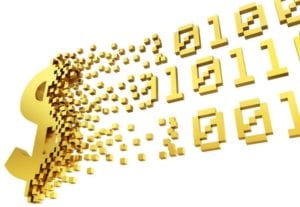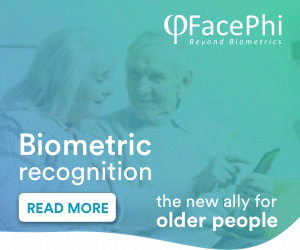For our first feature in this month’s Special Event on Financial Biometrics – presented in association with Money20/20 – we looked at the new challenges and incoming threats that the financial services sector is facing – particularly those that have been exacerbated by COVID-19 – and some of the biometric solutions now available.
This week, we’re going to try to look beyond COVID to see what’s next for payments and the future of money. And it’s a good bet that biometric tech will play an increasingly important role.
Money Goes Mobile
A good place to start, though, is with a novel approach to payments that is already on the scene, but expected to grow in a big way: mobile payments. Apple, Google, Samsung, and others have now firmly established prominent payments platforms that allow end users to perform transactions using their smartphones – not just online, but at physical retail locations.
There have been some signs that these payment platforms have been picking up momentum over the last couple of years. One estimate from last year, for example, pointed to a 135 percent jump in Apple Pay users over 2018. Consumers appreciate the convenience of being able to pay with their phones, and growing numbers of them are getting used to the idea of the kinds of contactless, tap-to-pay transactions that mobile payment platforms entail.
Others, though, are still concerned about security. The idea of abandoning signature or PIN-based transaction authorization without some kind of replacement is, for some, an uncomfortable one. And that’s why the biometric security of the most prominent mobile payments systems is so important. On Apple Pay, for example, it’s easier than ever to confirm a payment thanks to the implementation of Face ID on Apple’s latest iPhones. It may not be the biggest factor, but it’s surely an important one in encouraging more consumers to try out mobile payments.
Fingerprint-scanning Cards
This points to another coming wave in the payments sector: biometric payment cards. Financial services providers that have been looking for a way to offer customers strong security in a contactless card started to find answers a couple of years ago, when the fingerprint sensor specialists started presenting solutions that could be implemented in flexible smart card form factors.
The idea is simple: put a fingerprint sensor on a credit or debit card, and prompt the cardholder for a scan during a transaction. It can still be a tap-based, contactless payment; the only difference is that the user needs to have their registered finger on the sensor as they tap. This approach adds a huge boost in security to what remains an extremely convenient means of making a purchase.
Early trials of biometric payment cards got underway back in 2017 and accelerated over the ensuing years. More recently, global supply chain infrastructure has started to take shape, and technological advancements have helped to further drive down costs. Various players have been getting the certifications they need for mass market rollouts, and major deployments are anticipated for next year.
Post-card Payments

Another concept takes this idea a step further. What if cards are removed from the process entirely, leaving only a biometric scan? The idea is to link a consumer’s biometric profile directly to a payment account, so that any time a POS terminal scans their fingerprint, face, or other biometric, the linked account can be charged.
Such biometric payments – also called “naked payments”, since they don’t require any hardware on the consumer’s part – are still, for many, an entirely new concept. Biometric payment systems only started emerging a few years ago, with consumer-facing deployments popping up here and there in the form of pilot programs. But recent developments have helped to put naked payments in the spotlight. CLEAR, which is best known for its biometric screening program, brought a naked payments system to CenturyLink Field and the Safeco Field baseball stadium in Seattle in 2018, and followed that up with a deployment at New York’s Citi Field last year.
More importantly, Amazon recently unveiled a new biometric payment system based on palm scanning. It’s going to start with trial deployments at select stores in Seattle, but Amazon has indicated that it has ambitious plans for its Amazon One scanner. This is one of the biggest retail companies in the world, and its efforts to promote biometric payments will likely offer the best chance of helping this technology to go mainstream in the coming years.
Naked payments, along with biometric payment cards and mobile payment systems, have been quietly building steam for years. Now, in the age of COVID-19, it’s important to consider something that they all have in common: they all support contactless transactions. However important these novel payment technologies might have become in the near future, their mainstream adoption is likely to be further accelerated by a pandemic that has scared consumers away from shared surfaces and prompted many to start embracing contactless transactions.
That’s what’s next in payments and money: contactless technologies, with biometric security.
*
Financial Biometrics Month is presented in association with Money20/20 and made possible by our sponsors: Onfido, FacePhi, and BioConnect.
–
October 15, 2020 – by Alex Perala







Follow Us